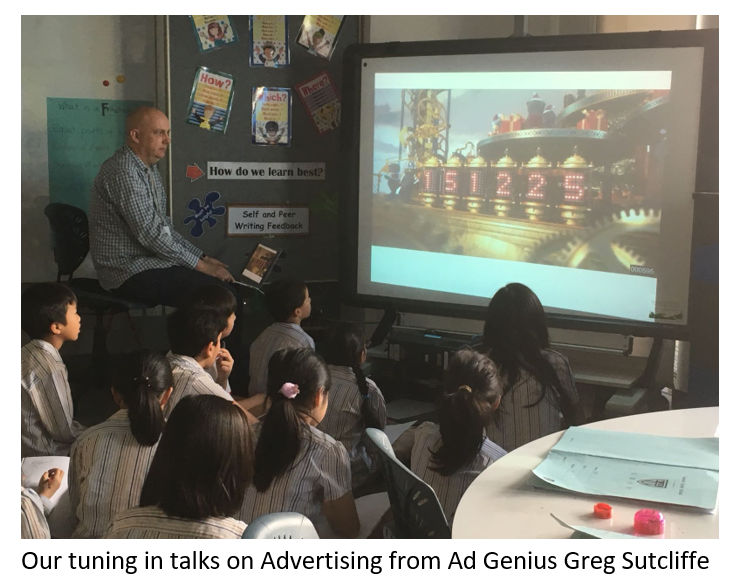Yr5 Curriculum Update – 23/03/18
Working together to achieve success for every child


Dear Parents – it was great to see everyone at the Student Led Conferences. We hope you were as proud and impressed as we were at how confident, knowledgeable and articulate the children were in explaining their learning. This week’s curriculum overview and update have been combined into one document for the sake of clarity and simplicity:
Y5 Unit Overview – This document is designed to inform you of the learning planned for your child’s next unit of inquiry. In addition we offer you some optional ideas for supporting your child at home.
How We Express Ourselves
In their fifth unit of inquiry, the Year 5 students will inquire into the central idea, “Media can influence an audience’s thinking and behaviour.” During this unit the students will inquire into:
The different forms of media, for example, print, television, radio and Internet, and how they are used depending on the audience’s age, gender, interests,etc. (form).
The devices media uses to influence an audience. Media uses specific devices and techniques to influence and/or persuade an audience. Semiotic codes are used to influence the creation of the media (linguistic, gestural, audio, spatial, visual) and ultimately the audience. (function)
How being a critical consumer of media can influence the decisions we make. Critical consumers and creators of media are able to articulate the techniques they choose to use, based on an understanding of what works.
Techniques to reflect upon include the semiotic codes. Other considerations include ethical consumerism and advertising. (reflection)
In doing these inquiries students will become better communicators and show creativity as they evaluate and construct advertisements. Students will become better at both viewing and presenting messages, feelings and intentions through the different media they encounter.
You may wish to support your child at home in the following ways:
|
KEY VOCABULARY used in this unit will be: Semiotic codes Visual , Linguistic, Spatial, Gestural, Clothing, Body language, Objects, Symbols, Title, Subtitles, Captions, Signs, Slogans, Speech bubbles, Position, Distance, Framing, Space, Appearance, Head movements, Facial expression, Movement, Posture, Gaze, Volume, Audible, Pace, Music, Silence, Layers Please consider using your Mother Tongue to develop your child’s understanding of these words. |
|
CONCEPTUAL QUESTIONS This unit will be addressed through the lens of form, function and reflection. Some of the different questions we will be asking are: What is media? What is this form of media and who is the intended audience? How is the media we are using evolving?What devices are used to influence an audience? How can we analyse the effectiveness of devices used on us? What does the message conveyed make me think or feel? How does media shape our thinking and behaviour? How can we evaluate the positive and negative impacts of media? Feel free to explore these questions with your child as well. |
| FUN THINGS TO DO This unit will begin by viewing some classic and provocative advertisements in a range of formats – print, web, video. Notice and discuss the advertising we see in and around Hong Kong. As we get a better understanding of how adverts express ideas, we will begin to create our own. Have fun creating different types of adverts for household objects, activities you do, or even your family itself! There are some great adverts from our own childhoods that you might want to share with this younger generation. When the teachers started planning this unit, we found it was a great source of nostalgia and discussion! |
| ACTION is a key element of the Primary Years Programme. We are always looking to see how children take their learning and apply it independently. This can take many forms – from a discussion about the Unit of Inquiry at home initiated by your child, role-play or even a request to bring a book or artifact in to school because it relates to the learning we have been doing in school. Now that you know what the unit is all about please keep your eyes open for evidence of action and let us know! Any action that you tell us about will be kept as part of your child’s records. |






